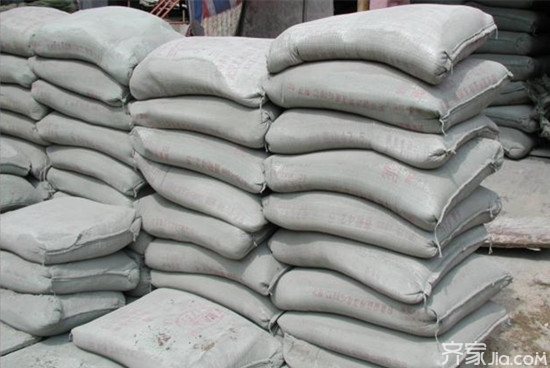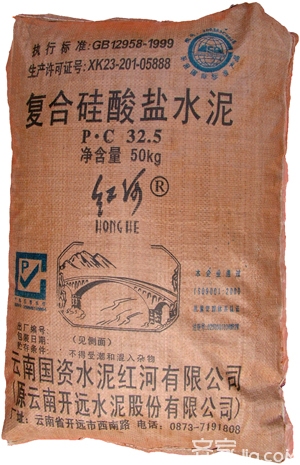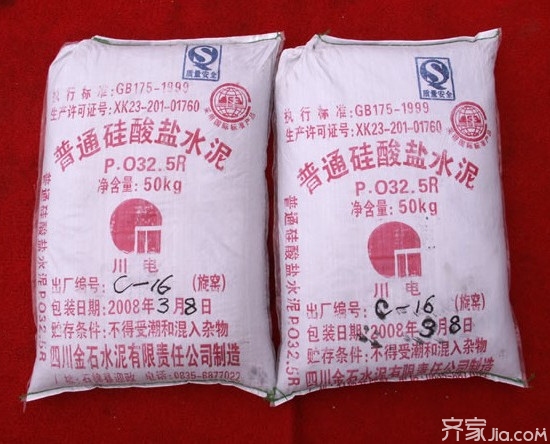Cement refers to a hydraulic binder that grinds the material and adds a suitable amount of water to form a plastic paste that can both harden in air and harden in water, and can firmly bind sand, stone, and other materials together. There are a variety of methods for classifying cements, which can be divided into general and special cements according to their purpose and performance. There are many kinds of cement, and there are as many as 100 cement varieties in the world. Cement is one of the major building materials and plays an important role in social development and economic development. Let's take a look at cement knowledge.
Introduction and role of cement knowledge cement knowledge

The introduction and role of cement:
Cement, powdered hydraulic inorganic cementitious material. After adding water, it becomes a slurry, which can be hardened in air or hardened in water, and can firmly bind sand, stone and other materials together. The mixture of early lime and volcanic ash was similar to modern lime-based pozzolanic cement. It used it to cement the concrete made of gravel. After hardening, it not only has higher strength but also resists fresh water or salt water. For a long time, it has been widely used in civil engineering, water conservancy, national defense and other projects as an important cementing material.
Cement is particularly suitable for the production of concrete, precast concrete, fair-faced concrete, GRC products, adhesives and other special occasions. It is commonly used in color pavement bricks, permeable bricks, culture stone, sculpture crafts, terrazzo, wear-resistant floor, putty, etc. The high light reflection performance makes the roadside stone, road signs, and road central dividers manufactured with higher traffic safety performance.
Cement term:
Cements are divided into three categories according to their uses and properties.
1. General Cement, Cement commonly used in civil engineering. General-purpose cement mainly refers to: GB175-1999, GB1344-1999 and GB12958-1999 six categories of cement, namely Portland cement, ordinary portland cement, slag portland cement, pozzolanic Portland cement, powder Coal ash portland cement and composite portland cement.
2, special cement, special purpose cement. Such as: G-grade oil well cement, road Portland cement.
3, characteristics of cement, a relatively prominent performance of the cement. Such as: quick-hardening Portland cement, low-heat slag portland cement, expanded sulphoaluminate cement.

Cement is classified according to its main hydraulic material name:
(1) Portland cement, commonly known as Portland cement abroad;
(2) Aluminate cement;
(3) sulphoaluminate cement;
(4) Ferroaluminate cement;
(5) Fluoroaluminate cement;
(6) Cements based on volcanic ash or potentially hydraulic materials and other active materials.
The main technical characteristics of cement as required in the designation of cement are divided into:
(1) Fastness: It is divided into two categories: fast and fast;
(2) Hydration heat: divided into two categories: medium heat and low heat;
(3) Sulfate resistance: two types of sulphate corrosion resistance and high resistance to sulphate corrosion;
(4) Swelling: Divided into two types: expansion and self-stress;
(5) High temperature resistance: The high temperature resistance of aluminate cement is classified by the content of alumina in the cement.

The general principle of cement naming:
The nomenclature of the cement is based on different types of cement, the main hydraulic minerals, mixed materials, uses and main characteristics, and strive to be concise and accurate. When the name is too long, abbreviations are allowed.
General cement is named after the main hydraulic mineral name of cement under the name of mixed material or other appropriate name.
Special cements are named for their specific use and can be modeled differently.
Characteristic cement is named after the cement's main characteristics by its cement's main hydraulic mineral name, and may be given different model or mixed material names.
Cements based on volcanic ash or latent hydraulic materials and other active materials are named after the name of the main component by the name of the active material, and can also be given the name of the property, such as gypsum slag cement, lime pozzolan cement. Wait.
The definition of major cement products:
1. Cement: Add water to mix into a plastic slurry, which can cement powdery hydraulic binder such as sand, stone and other materials that can both harden in air and harden in water.
2. Portland cement: hydraulic cementitious material made of Portland cement clinker 0%~5% limestone or granulated blast furnace slag, appropriate amount of gypsum ground, called Portland cement, divided into PI and P .II, commonly known as Portland cement abroad.
3. Ordinary portland cement: hydraulic cementitious material made of Portland cement clinker 6%~15% mixed material, appropriate amount of gypsum ground, known as ordinary portland cement (ordinary cement for short), code name :PO.
4. Slag Portland cement: hydraulic cementitious material made of Portland cement clinker, granulated blast furnace slag and appropriate amount of gypsum ground, known as slag Portland cement, code: PS.
5, pozzolanic Portland cement: hydraulic cementitious material made from Portland cement clinker, pozzolanic mixed material and appropriate amount of gypsum. Known as pozzolanic Portland cement, code: PP.
6, fly ash Portland cement: Portland cement clinker, fly ash and a suitable amount of gypsum milled hydraulic binder material, known as fly ash Portland cement, code: PF.
7. Composite Portland cement: a hydraulic cementitious material made of Portland cement clinker, two or more specified mixed materials and appropriate amount of gypsum ground, known as composite Portland cement (referred to as composite Cement), code PC.
8. Moderate heat Portland cement: a hydraulic cementitious material with moderate heat of hydration made of Portland cement clinker of appropriate composition and added with appropriate amount of gypsum.

9. Low-heat slag portland cement: A hydraulic cementitious material with low heat of hydration made of an appropriate amount of Portland cement clinker by adding a suitable amount of gypsum ground.
10. Fast-hardening Portland cement: Add appropriate amount of gypsum from portland cement clinker, and grind it to make cement with early strength and marked with 3-day compressive strength.
11. Sulfate-resistant portland cement: It is made of Portland cement clinker and added with proper amount of gypsum to make cement with good sulfate resistance.
12. White Portland cement: Add the appropriate amount of gypsum from the Portland cement clinker with low content of iron oxide, and grind the white cement.
13. Road Portland cement: hydraulic cementitious material made of road Portland cement, 0%~10% active mixed material and proper amount of gypsum ground, called road Portland cement, (abbreviated as road cement) ).
14, masonry cement: from the active mixing material, adding the appropriate amount of Portland cement clinker and gypsum, grinding made of low-grade cement mainly used for masonry mortar.
15. Oil well cement: Cement made of Portland cement clinker composed of appropriate minerals, appropriate amount of gypsum and mixed materials, etc., which is suitable for the cementing of oil and gas wells under certain well temperature conditions.
16, gypsum slag cement: Granulated blast furnace slag as the main component material, add the appropriate amount of gypsum, Portland cement clinker or lime milled cement.
The above is a brief introduction to cement knowledge, and I hope to help you. For more information, please visit this website. Stay tuned.
cement
Emergency Bulkhead ,Surface Mounted Exit Sign,Wall Mounted Fire Exit Signs,Wall Mounted Exitsign
Effort Semiconductor Lighting Ltd. , https://www.effortem.com
